












| Opilio canestrinii (Thorell, 1876) |













|
|
Scientific name: Opilio canestrinii (Thorell, 1876) Common name: French name: Order: Opiliones Family: Phalangiidae Size: Body size: 8 mm for females, 6 mm for males. Biotope: Parks and gardens, in the vicinity of human buildings, on walls. Woodland edges and copses on Nettles and Brambles. Web: No web. Observation period: You can observe adults from June to December, even to February in case of warm winters. Geographic area: Originated from Italy, Austria and Switzerland, this species is expanding northwards where it has already colonised France, Great Britain (1999), Germany and Denmark. This causes an important regression of the Opilio parietinus species in the concerned regions. |
Opilio canestrinii shows very long legs. The ocularium is white and rather small with 4 to 7 small teeth, rather difficult to see, on each carina. The abdomen shows short white transversal lines with dark back margins on a reddish brown or greenish brown ground colour. These lines are better marked on juveniles and slightly disappear on adults. Males' abdomen is generally reddish or yellowish, females' one is a lighter colour. The coxae are whitish, yellowish or pale brown without any dark marks. The legs, with a round section, show small rows of black spines. Those of males are black, those of females are ringed. Opilio parietinus and Opilio saxatilis have black marks on the underside of coxae (underside view required). Opilio saxatilis shows a thin pale longitudinal line in the middle of the abdomen. The overall appearance may suggest one harvestman of the Leiobunum genus and in particular the white ocularium may suggest Leiobunum blackwalli. You can tell this last one apart with its bicolour coxae. |
| [To know more about the Opilio canestrinii] [Next picture] [Top] |
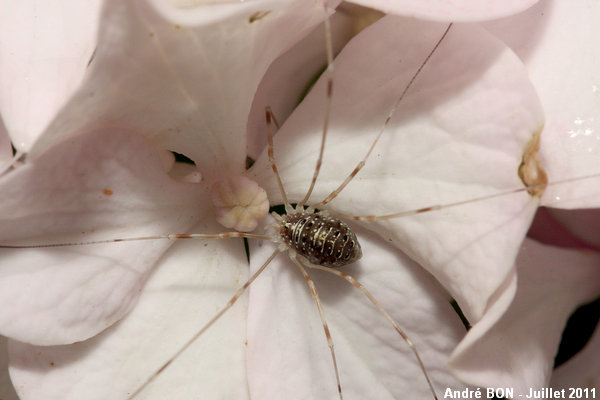
|
I think that this one is a juvenile Opilio canestrinii. I have observed it on a rose blossom. |
| [To know more about the Opilio canestrinii] [Next picture] [Previous picture] [Top] |

|
This picture clearly shows the very long legs. |
| [To know more about the Opilio canestrinii] [Next picture] [Previous picture] [Top] |
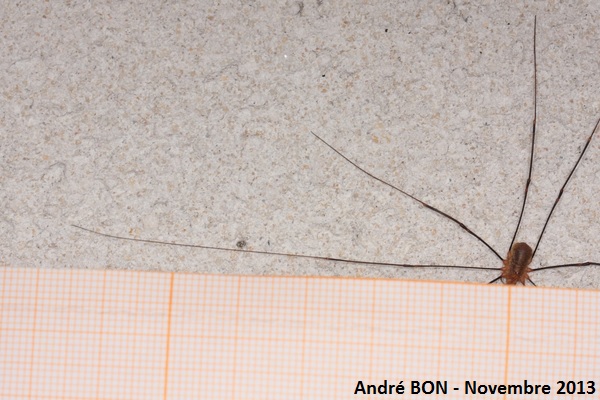
|
This male has been very cooperative by staying perfectly immobile when I approached a sheet of graph paper. I have measured the length of its leg II at 65mm. |
| [To know more about the Opilio canestrinii] [Next picture] [Previous picture] [Top] |
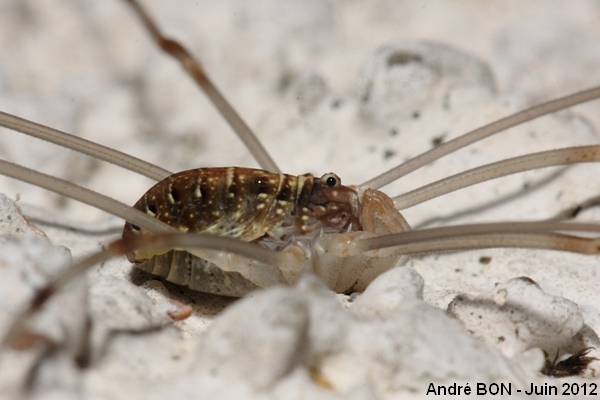
|
With this side view you can see the underside of the coxae. There is no black mark. |
| [To know more about the Opilio canestrinii] [Next picture] [Previous picture] [Top] |

|
Here is a picture of the same harvestman but with a different angle of view. |
| [To know more about the Opilio canestrinii] [Next picture] [Previous picture] [Top] |
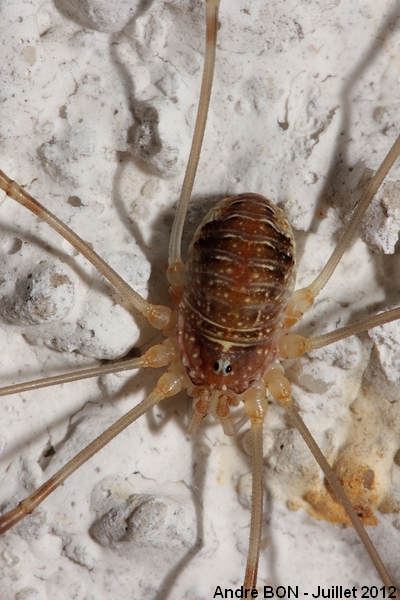
|
Here is another picture of a female. The legs are lightly ringed. Those of males are black. |
| [To know more about the Opilio canestrinii] [Next picture] [Previous picture] [Top] |
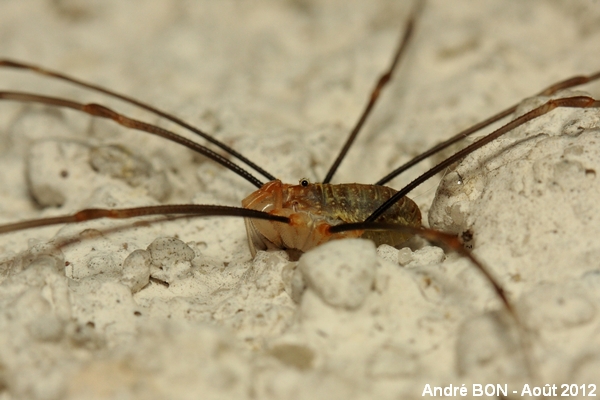
|
Here is one male with a slightly more reddish colour and with black legs. |
| [To know more about the Opilio canestrinii] [Next picture] [Previous picture] [Top] |
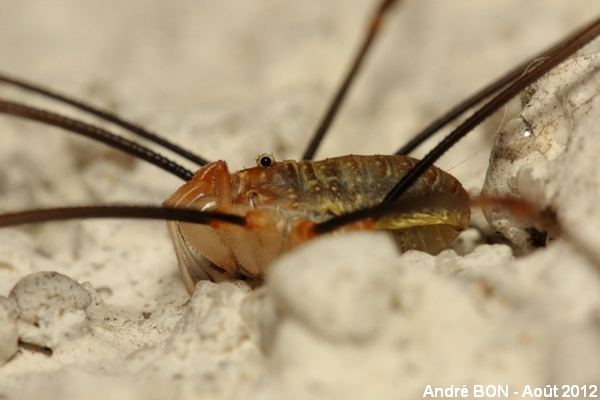
|
The small teeth above the ocularium are visible on this picture. |
| [To know more about the Opilio canestrinii] [Next picture] [Previous picture] [Top] |
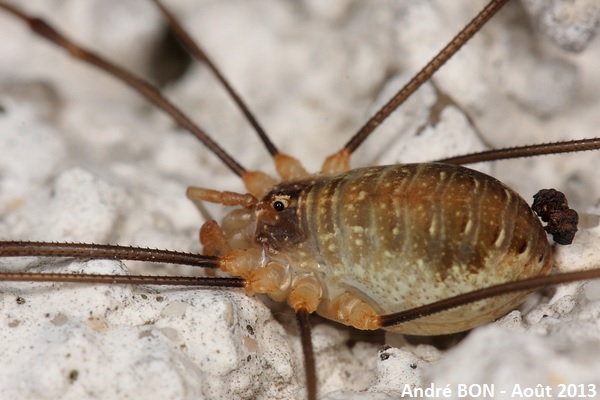
|
Another male with its black legs. |
| [To know more about the Opilio canestrinii] [Next picture] [Previous picture] [Top] |
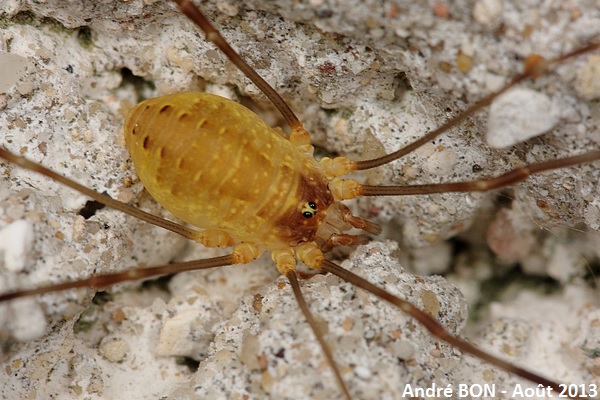
|
The colour of this harvestman may be explained by a very recent moult. I think it will retrieve its normal colour after a few hours. |
| [To know more about the Opilio canestrinii] [Next picture] [Previous picture] [Top] |
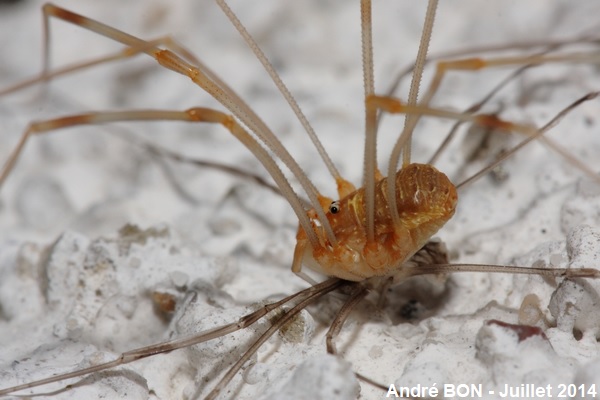
|
Here is, this times, one harvestman observed while moulting. |
| [To know more about the Opilio canestrinii] [Next picture] [Previous picture] [Top] |
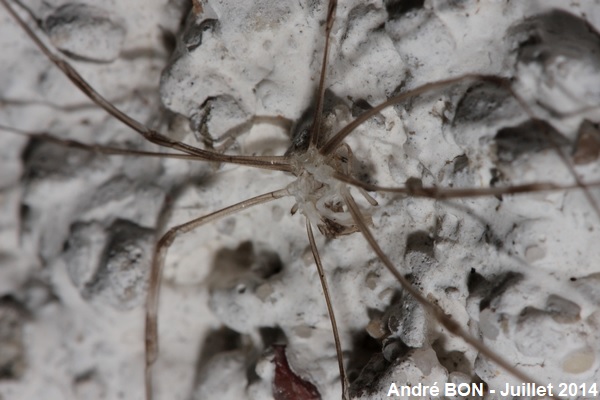
|
Here are the moult remains. |
| [To know more about the Opilio canestrinii] [Previous picture] [Top] |
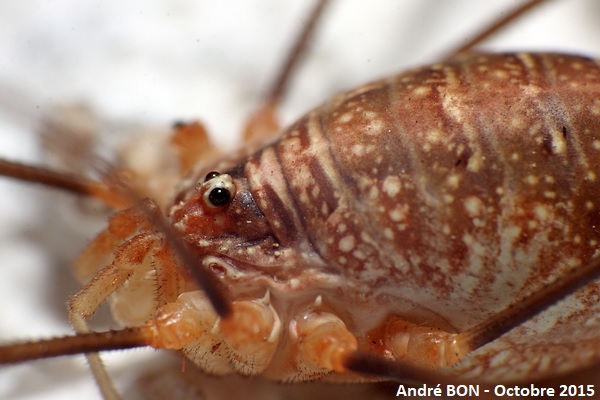
|
On this very close view you can guess the small teeth on the carina of the ocularium. |